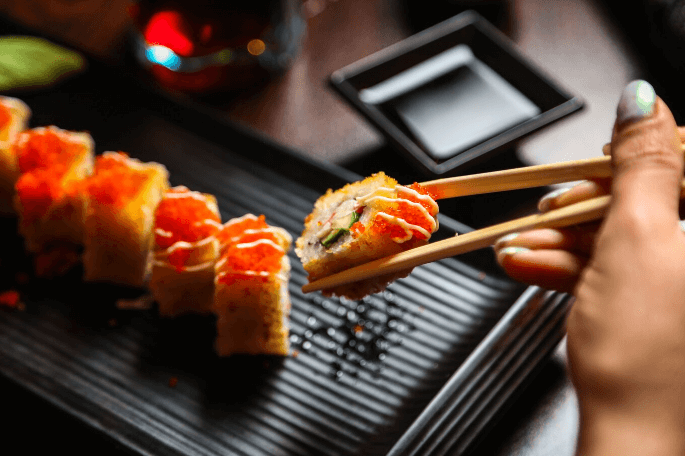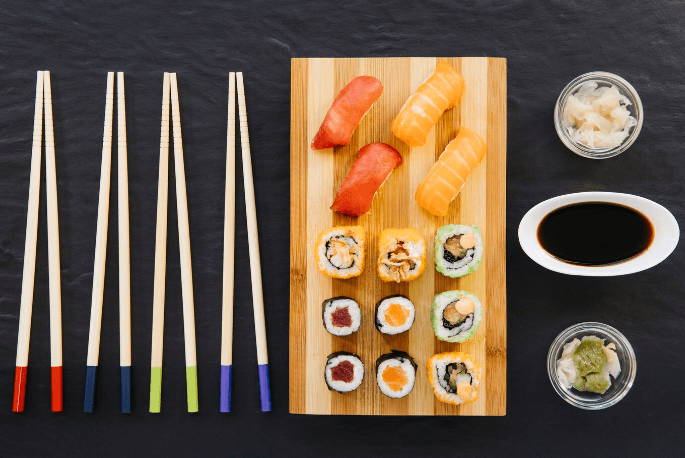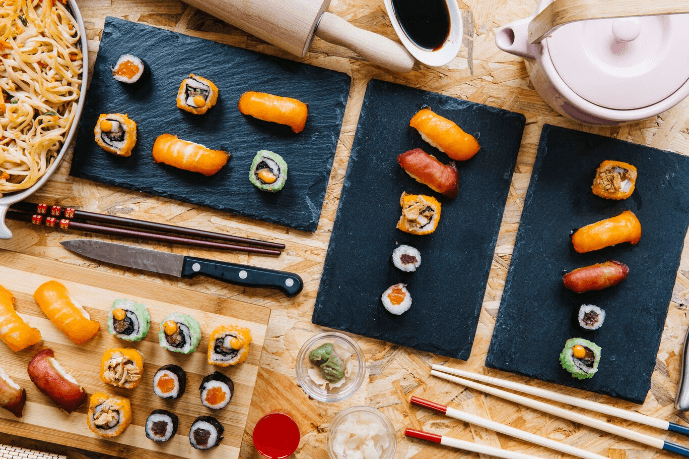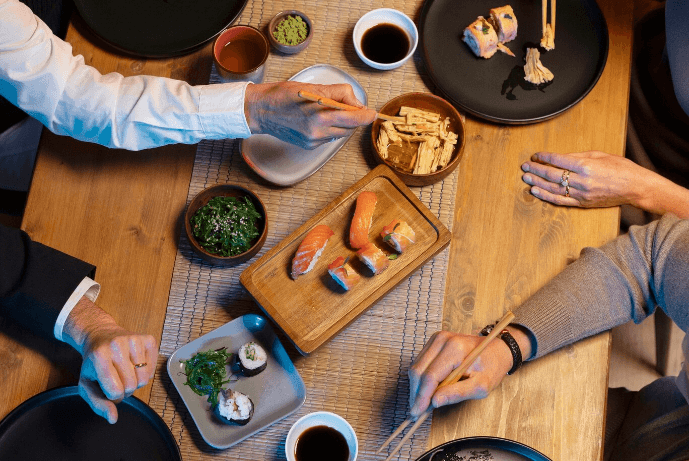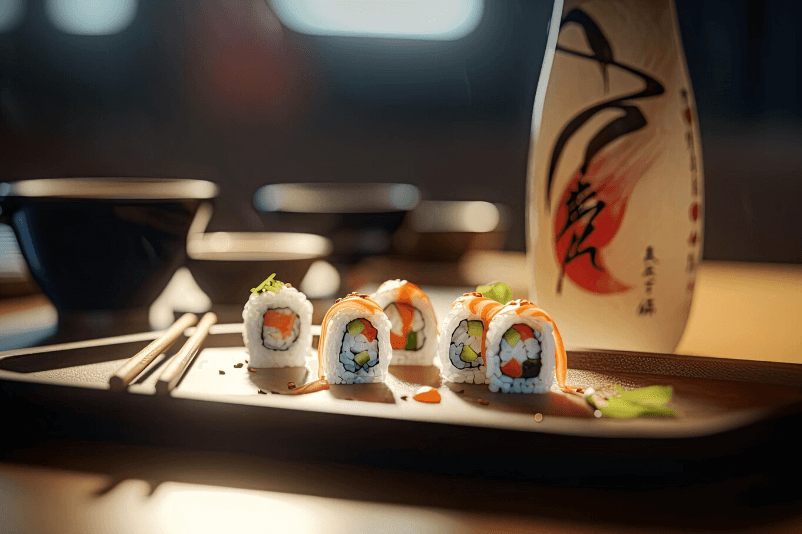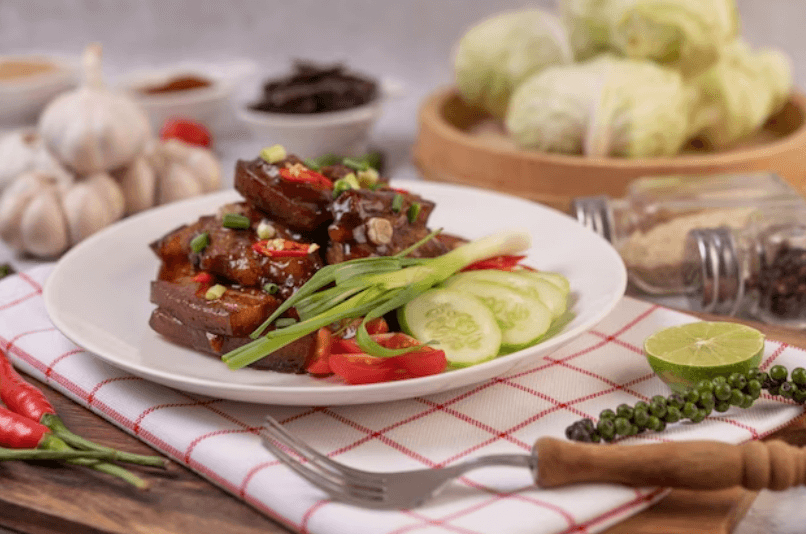Makimono Sushi Rolls: The Best And Most Delicious Kind Of Japanese Food
Makimono sushi rolls are the best and most delicious kind of Japanese food. There are many different types of makimono, but the most popular ones are the salmon, tuna, and cucumber rolls. Makimono sushi is made by wrapping a sheet of nori (seaweed) around rice and fillings, then rolling it up into a cylinder shape. The fillings can be anything from raw fish to vegetables to cooked meats. One of the best things about makimono sushi is that it is easy to eat with your hands, making it a perfect food to take on the go. Whether you are at a party or picnicking in the park, makimono sushi is always a hit!
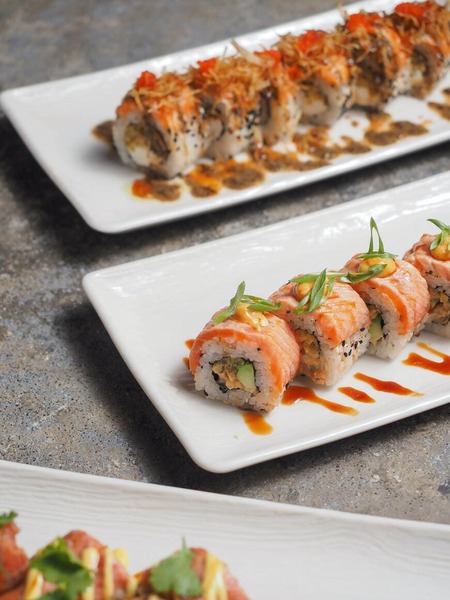
What is Makimono Sushi?
Makimono sushi is a type of Japanese sushi that is made by rolling fish, vegetables, and rice in seaweed. It is a popular dish in Japan and is often served at parties and other special occasions. Makimono sushi is easy to make and can be made ahead of time, which makes it a great option for entertaining.
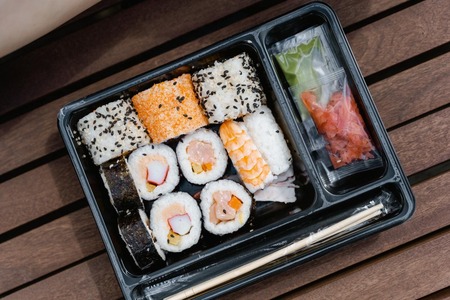
The Different Types of Makimono Sushi
There are many different types of Makimono sushi, each with its own unique flavor and appearance. The most common type of Makimono sushi is the California roll, which is made with avocado, cucumber, and crab meat. Other popular types of Makimono sushi include the Philadelphia roll, which is made with salmon, cream cheese, and cucumber; the Spicy Tuna roll, which is made with tuna, chili sauce, and cucumber; and the Vegetarian roll, which is made with vegetables such as carrots, cucumber, and avocado.
Pros and Cons of Makimono Sushi
Makimono sushi is a type of sushi that is rolled up into a cone or cylinder shape. It is one of the most popular types of sushi in Japan and is often served at parties and other special occasions. Makimono sushi can be made with either brown or white rice, and the fillings can vary widely, although they typically include raw fish, vegetables, and pickled ginger.
There are both pros and cons to eating makimono sushi. One of the main advantages is that it is relatively easy to eat; unlike nigiri sushi, which requires using chopsticks, makimono sushi can be eaten with your fingers. Additionally, makimono sushi rolls tend to be very filling, so they make a great light meal or snack. On the downside, some people find that makimono rolls are too complicated to make at home; however, there are many pre-made options available at most supermarkets.(Different Types of Nigiri)
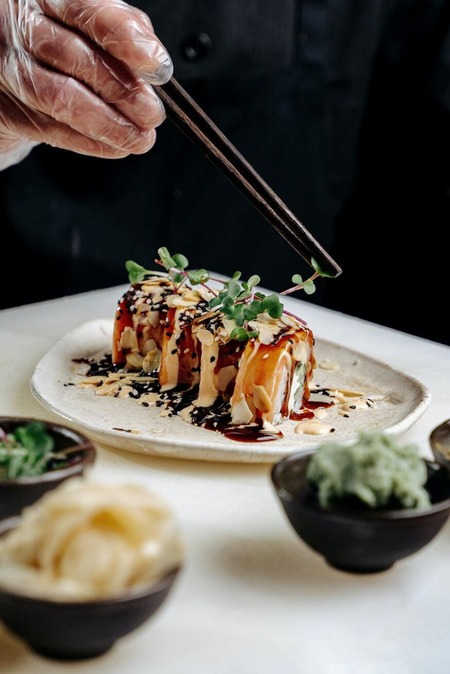
What Foods to Eat with Makimono Sushi?
Makimono sushi rolls are the best and most delicious kind of Japanese food. They are made with rice, fish, vegetables, and seaweed, and they are rolled up in a nori (seaweed) sheet. Makimono sushi rolls are usually served with soy sauce and pickled ginger on the side.
If you are wondering what kind of food to eat with makimono sushi rolls, there are many options. You can either eat them as is, or you can dip them in soy sauce. If you want to add some extra flavor to your makimono sushi rolls, you can also dip them in wasabi paste or sprinkle some on top. Another option is to wrap them in cucumber strips or nori sheets.
Whatever way you decide to eat your makimono sushi rolls, they will be delicious!
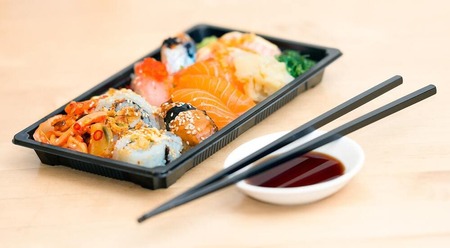
Makimono Recipes
Makimono sushi rolls are the best and most delicious kind of Japanese food. They are made with cooked rice and nori (seaweed) sheets, and fillings can include raw fish, vegetables, and pickled ginger. Makimono sushi rolls are usually dipped in soy sauce before eating.
There are many different ways to make makimono sushi rolls. The following recipe is for a simple salmon and cucumber roll.
Ingredients:
-1 sheet of nori (dried seaweed)
-1 cup cooked sushi rice
-1/2 cucumber, cut into thin strips
-4 ounces smoked salmon, cut into thin strips
-1 tablespoon wasabi paste (optional)
-Soy sauce, for dipping
Instructions:
1. Place the nori sheet on a bamboo sushi mat or a clean cutting board. Spread the cooked sushi rice over the nori, leaving a 1-inch border at the edge furthest from you.
2. Place the cucumber strips and smoked salmon in the center of the rice. If using wasabi paste, spread it over the fillings.
3. Starting at the edge closest to you, roll up the nori tightly around the fillings, using your bamboo mat or cutting board to help shape it into a nice tight log shape.
4. Wet the edges of the nori with water to help seal it closed. Slice the roll
Alternatives to Makimono Sushi
If you’re looking for an alternative to makimono sushi, there are plenty of delicious options to choose from. Tempura is a great option if you’re looking for something fried and crispy. If you’re in the mood for something raw, try sashimi or nigiri sushi. And if you want something in between, consider hosomaki or uramaki sushi rolls. No matter what you’re in the mood for, there’s sure to be a sushi roll that’s perfect for you!
What is Makimono: Understanding its Place in Japanese Cuisine
Makimono, also known as sushi rolls, is a beloved staple in Japanese cuisine. Made with a variety of fresh ingredients, these rolls offer a burst of flavors and textures that make them a popular choice among sushi enthusiasts worldwide.
The word “makimono” translates to “rolled-up thing” in Japanese, which perfectly describes the nature of these delectable creations. Traditional makimono consists of rice and various fillings, such as fish, vegetables, or even pickled ginger, rolled tightly in a sheet of seaweed called nori.
Makimono plays an important role in Japanese cuisine as it showcases the country’s dedication to precision and artistry. Each roll is carefully crafted, with meticulous attention to detail in its preparation and presentation. This attention to detail extends to the selection of ingredients, with an emphasis on freshness and quality.
One of the defining characteristics of makimono is its versatility. There are countless variations and combinations of fillings, allowing chefs and home cooks to get creative and cater to different tastes and dietary preferences. From classic options like the California Roll to more adventurous choices like the Spicy Tuna Roll, there is a makimono for everyone to enjoy.
Makimono is not only appreciated for its taste but also for its visual appeal. The colorful ingredients and precise rolling technique create a visually stunning dish that is a feast for the eyes. This attention to aesthetics is deeply rooted in Japanese culture, where food presentation is considered an art form.
To fully appreciate the artistry and flavors of makimono, it is best enjoyed with soy sauce, wasabi, and pickled ginger. These condiments complement the rolls and enhance the overall dining experience. Each bite of makimono is a harmonious blend of flavors, textures, and aromas that tantalize the taste buds.
In conclusion, makimono holds a special place in Japanese cuisine as a delicious and visually appealing dish that represents the country’s dedication to precision, artistry, and culinary tradition. Whether enjoyed at a traditional sushi bar or made at home, makimono is a culinary delight that should not be missed.
| Roll Name | Description |
|---|---|
| California Roll | A classic makimono with crab, avocado, and cucumber |
| Spicy Tuna Roll | A popular choice featuring spicy tuna and cucumber |
| Tempura Roll | A crispy roll filled with tempura-battered ingredients |
| Dragon Roll | A visually stunning roll with eel, avocado, and cucumber |
The History and Cultural Significance of Makimono in Japan
Makimono, or sushi rolls, have a rich history and cultural significance in Japan. Dating back to the 8th century, makimono was originally a way to preserve fish by wrapping it in rice and fermenting it. It was later developed into a form of art, combining different ingredients and flavors to create visually appealing and delicious sushi rolls.
Makimono became popular during the Edo period (1603-1868) when sushi chefs began to experiment with different combinations of ingredients, such as vegetables, seafood, and meat. This led to the creation of various types of makimono, each with its own unique flavor profile and presentation.
Today, makimono is not only a beloved dish in Japan but also an important part of Japanese culture. It is often served during special occasions and celebrations, such as weddings and festivals. The art of making makimono has been passed down through generations, with sushi chefs striving to perfect their craft and create new and innovative sushi rolls.
Not only is makimono appreciated for its taste and visual appeal, but it also symbolizes the values and traditions of Japan. The art of making makimono requires patience, precision, and attention to detail, reflecting the Japanese philosophy of craftsmanship and perfectionism. Additionally, the ingredients used in makimono often have symbolic meanings. For example, the use of seaweed represents good luck and prosperity, while the use of fish symbolizes abundance and fertility.
In conclusion, makimono holds a special place in Japanese cuisine and culture. With its long history and cultural significance, it is more than just a dish – it is a work of art that embodies the traditions and values of Japan.
Varieties and Types of Makimono
Makimono, or traditional Japanese sushi rolls, come in a variety of types and flavors. Each type of makimono is unique and offers a different taste experience. Here are some popular varieties:
1. Hosomaki: Hosomaki rolls are thin sushi rolls that typically consist of one type of filling wrapped in nori seaweed and sushi rice. Common fillings include tuna, cucumber, and pickled radish. This type of makimono is often served as an appetizer.
2. Futomaki: Futomaki rolls are larger sushi rolls that can contain multiple ingredients. They are typically filled with a combination of vegetables, seafood, and sometimes even cooked egg. Futomaki rolls are often sliced into thick slices and served as a main course.
3. Uramaki: Uramaki rolls are inside-out sushi rolls, meaning that the rice is on the outside and the nori seaweed is on the inside. This type of makimono is often filled with a variety of ingredients, such as avocado, shrimp, and mayonnaise. Uramaki rolls are a popular choice for those who prefer a milder taste.
4. Temaki: Temaki rolls, also known as hand rolls, are cone-shaped sushi rolls that are typically filled with a combination of seafood, vegetables, and sushi rice. They are designed to be eaten with the hands and are often enjoyed as a quick snack or meal.
5. Nigiri: While not technically a type of makimono, nigiri sushi is a popular sushi dish that is often served alongside makimono rolls. Nigiri sushi consists of a small mound of sushi rice topped with a slice of raw fish or seafood. It is typically dipped in soy sauce before being eaten.
These are just a few examples of the many varieties and types of makimono available in traditional Japanese cuisine. Whether you prefer a simple hosomaki roll or a more complex uramaki roll, there is a makimono to suit every taste and preference.
Differentiating Makimono: From Basic Rolls to Specialty Creations
When it comes to traditional Japanese sushi rolls, known as makimono, there is a wide range of options to choose from. From the basic rolls to the more elaborate specialty creations, each variation offers a unique combination of flavors and textures that can satisfy even the most discerning palate.
The basic rolls, such as the Hosomaki and Futomaki, are simple yet delicious. The Hosomaki is a thin roll typically filled with a single ingredient, such as cucumber or pickled daikon radish. On the other hand, the Futomaki is a larger roll that contains multiple fillings, including seafood, vegetables, and sometimes omelet. These rolls are perfect for those who prefer a straightforward sushi experience.
For those looking for a more adventurous culinary journey, specialty makimono creations provide a delightful blend of flavors and artistic presentation. One popular specialty roll is the California Roll, which was actually created in the United States. It features crab meat, avocado, and cucumber, all rolled inside-out with a layer of sesame seeds coating the exterior. The California Roll gained popularity due to its appealing taste and the use of avocado, which adds a creamy texture to the roll.
Another specialty roll is the Spider Roll, which is named after its spider-like appearance. It consists of deep-fried soft-shell crab, cucumber, and sometimes spicy mayo for an added kick. The tempura batter gives the soft-shell crab a crispy texture, and the combination of flavors creates a unique and satisfying experience.
| Basic Rolls | Specialty Creations |
|---|---|
| Hosomaki | California Roll |
| Futomaki | Spider Roll |
These are just a few examples of the many types of makimono available. Whether you prefer the simplicity of the basic rolls or the complexity of the specialty creations, there is a sushi roll to suit every taste. So next time you’re dining at a Japanese restaurant or trying your hand at making sushi at home, don’t be afraid to explore the world of makimono and discover your new favorite roll!
Popular Makimono Varieties: Salmon Makimono, California Rolls, and More
When it comes to makimono, there are so many delicious and popular varieties to choose from. Let’s explore a few must-try options.
One of the most beloved types of makimono is the Salmon Makimono. This roll features fresh salmon slices as the main ingredient, paired with sushi rice and other fillings. The combination of the creamy salmon and perfectly seasoned rice makes for a mouthwatering treat.
Another popular choice is the California Roll. Originating in the United States, this maki roll often contains avocado, imitation crab meat, and cucumber. The California Roll offers a delightful blend of textures and flavors, with a creamy and crunchy bite.
Spicy Tuna Makimono is another highly sought-after variety. Made with raw tuna and a spicy mayo-based sauce, this roll packs a punch of flavor. The heat from the spicy mayo complements the freshness of the tuna, creating a harmonious balance.
If you’re looking for a vegetarian option, try the Vegetable Makimono. This roll is filled with a colorful assortment of fresh vegetables such as cucumber, bell peppers, carrots, and sprouts. It’s a refreshing and healthy choice.
For those who enjoy a little heat, the Spicy Salmon Makimono is a fantastic choice. This roll features spicy salmon mixed with mayo and other seasonings, providing a fiery kick. It’s a popular option for sushi lovers who enjoy a spicy twist.
Lastly, the Dragon Roll is a showstopper. This roll typically contains shrimp tempura, cucumber, and avocado, with slices of unagi (grilled eel) on top. The combination of textures and flavors in the Dragon Roll is simply exquisite.
Overall, there are countless makimono varieties to suit every taste and preference. Whether you enjoy the richness of salmon, the heat of spicy fillings, or the freshness of vegetarian options, there’s a makimono roll for everyone to savor.
The Art of Makimono: Exploring Unique and Uncommon Variations
One such variation is the temaki roll, also known as a hand roll. Unlike traditional maki rolls that are sliced into bite-sized pieces, a temaki roll is cone-shaped and is meant to be eaten with your hands. It typically features a combination of fresh fish, crisp vegetables, and tangy sauces all wrapped up in a sheet of nori seaweed.
Another uncommon variation is the uramaki roll, also known as an inside-out roll. This type of roll is made by placing the nori on the inside of the roll rather than wrapping it around the filling. This technique allows for more creative combinations of ingredients, as anything can be used as a filling, from cooked meats to grilled vegetables to marinated tofu.
One unique and visually stunning variation is the rainbow roll. This roll features a colorful array of different fish arranged on top of a standard maki roll. It’s not uncommon to see slices of tuna, salmon, yellowtail, and avocado adorning the top of a rainbow roll, creating a visually appealing and delicious dish.
For those looking for a truly adventurous experience, the futo maki roll may be the perfect choice. This roll is known for its large size and diverse array of fillings. Typically, a futo maki roll includes a combination of cooked vegetables, pickles, and egg, all wrapped tightly in a sheet of nori. It’s a filling and satisfying option for those who crave a hearty sushi roll.
| Roll Type | Description |
|---|---|
| Temaki Roll | A cone-shaped roll meant to be eaten with hands |
| Uramaki Roll | An inside-out roll with creative filling options |
| Rainbow Roll | A visually stunning roll with an array of colorful fish |
| Futo Maki Roll | A large roll with a variety of fillings, perfect for those who crave a hearty sushi roll |
These are just a few examples of the unique and uncommon variations that can be found in the world of makimono. Exploring these different types of sushi rolls is not only a delicious experience, but also a journey into the artistry and creativity that goes into the creation of each roll.
Makimono vs. Other Sushi Forms
Makimono, or sushi rolls, are one of the most popular forms of sushi worldwide. While they share similarities with other types of sushi, including nigiri and sashimi, makimono has its own unique characteristics that set it apart.
One key difference between makimono and other forms of sushi is the way they are prepared. Makimono is made by rolling a sheet of nori (seaweed) with sushi rice and various fillings using a bamboo mat called a makisu. This rolling technique gives makimono its distinctive cylindrical shape and allows for a wide range of creative fillings and combinations.
Unlike nigiri, which consists of a small mound of sushi rice topped with a single slice of raw fish, makimono allows for multiple fillings and can include both raw and cooked ingredients. This versatility makes it a popular choice for those who prefer a variety of flavors and textures in their sushi.
Another notable difference is the presentation of makimono. Nigiri and sashimi are often served as individual pieces, while makimono is typically sliced into bite-sized pieces known as maki. These bite-sized rolls make it easier to eat and share, and also allow for a visually appealing presentation.
In addition, the variety of makimono is vast compared to other sushi forms. Makimono can be found in a wide range of flavors and combinations, from traditional options like tuna and avocado, to more inventive creations using ingredients like tempura, cream cheese, and even fruit. This diversity makes it a popular choice for sushi lovers with different preferences and dietary restrictions.
Overall, while makimono shares similarities with other forms of sushi, its unique preparation, versatility, presentation, and variety of flavors make it a beloved and distinctive member of the sushi family.
Makimono vs. Nigiri: Understanding the Differences
When it comes to traditional Japanese sushi, two popular types that often come to mind are makimono and nigiri. While both types feature a combination of rice and fish, there are key differences that set them apart. Understanding the differences between makimono and nigiri can enhance your appreciation for the art of sushi and help you make informed choices when dining at a sushi restaurant.
Makimono, also known as sushi rolls, are perhaps the most recognizable form of sushi. They consist of a layer of sushi rice that is spread onto a sheet of nori (seaweed) and then filled with a variety of ingredients, such as fish, vegetables, and other accompaniments. Once the ingredients are added, the nori is tightly rolled and sliced into bite-sized pieces. The result is a cylindrical-shaped roll with a cross-section that displays a beautiful combination of colorful ingredients.
Nigiri, on the other hand, is a simpler form of sushi that showcases the quality and freshness of the fish. It consists of a small mound of sushi rice that is topped with a slice of raw fish or seafood, often held together with a thin strip of seaweed. The simplicity of nigiri allows the natural flavors and textures of the fish to take center stage. It is usually served with a small amount of soy sauce and wasabi on the side for dipping.
One of the main differences between makimono and nigiri is the presentation. Makimono is typically served in bite-sized pieces, making it easy to pick up with chopsticks and consume in one or two bites. Its cylindrical shape allows for a visually appealing dish that often includes a variety of colorful ingredients, resulting in a vibrant and artistic presentation. Nigiri, on the other hand, is presented as individual pieces, with each slice of fish delicately placed on top of the rice. This presentation highlights the quality of the fish and allows for a more focused tasting experience.
Another difference between makimono and nigiri is the texture and eating experience. Makimono often features a combination of flavors and textures, with the rice, fish, and other ingredients coming together to create a harmonious bite. The nori adds a slightly chewy texture, while the rice provides a soft and sticky base. Nigiri, on the other hand, focuses on the individual texture of the fish, allowing the diner to fully appreciate its freshness and delicacy. The rice in nigiri is often lightly seasoned with vinegar, giving it a subtle tang that complements the fish.
While both makimono and nigiri have their own distinct qualities, they are equally loved by sushi enthusiasts around the world. Whether you prefer the artistic presentation and flavor combinations of makimono or the simplicity and focus on the fish in nigiri, exploring both types of sushi can be a culinary adventure that brings you closer to the rich traditions of Japanese cuisine.
The Comparison of Makimono and Sushi Rolls: Ingredients and Preparation
Both makimono and sushi rolls are popular traditional Japanese dishes that are enjoyed all over the world. While they may seem similar, there are some key differences in terms of ingredients and preparation.
Makimono, also known as norimaki, is a type of sushi roll that is made using a bamboo mat called a makisu. The ingredients for makimono include sushi rice, seaweed (nori), and a variety of fillings such as fish, vegetables, and sometimes even fruit. The fillings are placed on top of the nori and rolled tightly using the bamboo mat. Makimono is then sliced into bite-sized pieces, usually between 6 to 8 pieces per roll.
Sushi rolls, on the other hand, refer to a broader category of sushi that includes different types of rolls such as uramaki, temaki, and futomaki. Sushi rolls can be made using a bamboo mat or by hand. The ingredients for sushi rolls usually include sushi rice, nori, and a combination of raw or cooked fish, vegetables, and sauces. The fillings are placed on top of the nori, and the roll is then tightly wrapped using the bamboo mat or shaped by hand into a cone shape for temaki rolls.
One key difference between makimono and sushi rolls is the placement of the rice and fillings. In makimono, the rice is on the inside, while the fillings are on the outside. This means that the nori is wrapped around the fillings in makimono. In sushi rolls, the rice is on the outside, and the nori is wrapped around the rice and fillings.
Another difference is the size and shape of the rolls. Makimono is typically smaller and thinner compared to sushi rolls, which can have a larger size and are often more stuffed with fillings. The shape of makimono is cylindrical, while sushi rolls can be cylindrical or cone-shaped.
In terms of preparation, both makimono and sushi rolls require a similar process of rolling and slicing. The sushi rice is prepared by cooking short-grain rice with vinegar, sugar, and salt. Once the rice is cooked and seasoned, it is spread onto a sheet of nori, and the fillings are placed on top. The roll is then wrapped and shaped using a bamboo mat or by hand. Finally, the roll is sliced into bite-sized pieces using a sharp knife.
| Makimono | Sushi Rolls |
|---|---|
| Ingredients: Sushi rice, nori, various fillings | Ingredients: Sushi rice, nori, various fillings |
| Preparation: Fillings placed on top of nori, rolled tightly using a bamboo mat | Preparation: Rice spread onto nori, fillings placed on top, rolled using a bamboo mat or shaped by hand |
| Placement: Rice on the inside, fillings on the outside | Placement: Rice on the outside, fillings on the inside |
| Size and Shape: Smaller, cylindrical | Size and Shape: Larger, cylindrical or cone-shaped |
In conclusion, while makimono and sushi rolls share many similarities, including the use of sushi rice, nori, and various fillings, they differ in terms of the placement of the rice and fillings, size and shape, and preparation methods. Both are delicious options for sushi lovers, and exploring the differences can add variety to your sushi experience.
Specialty Makimono: Unique Fusions and Modern Interpretations
In addition to the traditional styles of sushi rolls, there are also specialty Makimono that offer a unique fusion of flavors and modern interpretations of this Japanese culinary art form. These creative rolls combine traditional ingredients with unexpected flavors, resulting in a truly unforgettable dining experience.
One popular specialty Makimono is the “Spicy Tuna Crunch Roll.” This roll features a combination of spicy tuna and avocado, topped with a crispy tempura batter for added texture. The spicy kick of the tuna is balanced by the creamy avocado, while the tempura adds a satisfying crunch to each bite. This roll is often served with a drizzle of spicy mayonnaise and soy sauce for an extra burst of flavor.
Another innovative fusion roll is the “California Dragon Roll.” This roll takes inspiration from the classic California roll by incorporating crab meat, cucumber, and avocado. However, it adds a modern twist by topping the roll with slices of fresh, flame-seared salmon. The combination of flavors and textures in this roll is truly exceptional, with the creamy avocado and cucumber complementing the richness of the crab and the smoky salmon.
For those looking for a vegetarian option, the “Crispy Vegetable Tempura Roll” offers a delicious and satisfying choice. This roll features a selection of crispy, lightly-battered tempura vegetables, such as sweet potato, zucchini, and bell pepper. The vegetables are wrapped in a layer of sushi rice and nori, creating a perfect balance of flavors and textures. This roll is often served with a tangy dipping sauce to enhance the overall taste.
As sushi has gained popularity around the world, chefs have continued to innovate and create new interpretations of this beloved cuisine. Today, specialty Makimono can be found in sushi restaurants worldwide, combining traditional techniques and ingredients with modern flavors and presentations. These unique rolls are a testament to the creativity and skill of sushi chefs, and they offer a delightful culinary experience for sushi enthusiasts.
Whether you’re a traditionalist or someone who enjoys exploring new flavors, specialty Makimono is a must-try for any sushi lover. These rolls push the boundaries of traditional sushi and offer a fresh and exciting take on this iconic Japanese dish. So next time you find yourself at a sushi restaurant, don’t be afraid to step outside your comfort zone and give one of these unique creations a try!
Making Makimono: Techniques and Ingredients
Makimono, also known as sushi rolls, is a traditional Japanese dish that is enjoyed around the world for its combination of fresh ingredients, delicate flavors, and artistic presentation. Making makimono requires a deep understanding of techniques and the selection of high-quality ingredients.
One of the most important techniques in making makimono is properly cooking the sushi rice. This involves washing the rice to remove excess starch and then cooking it in a rice cooker or on the stove. The rice should be cooked so that it is sticky enough to hold the ingredients together, but not overly mushy.
In addition to the rice, the nori seaweed used to wrap the sushi roll is another key ingredient. Nori is made from dried seaweed that is roasted and then cut into sheets. It adds a delicious umami flavor and provides a crisp texture to the sushi roll. The nori should be handled with care to prevent it from becoming too brittle or tearing.
When it comes to selecting fillings for makimono, the options are endless. Traditional fillings include fresh fish such as tuna, salmon, or yellowtail, as well as vegetables like cucumber, avocado, or shiitake mushrooms. It’s important to choose ingredients that are fresh and of high quality to ensure a flavorful and visually appealing roll.
Another technique in making makimono is the rolling process itself. To create a perfect roll, a bamboo sushi mat called a makisu is used. The ingredients are placed on top of the nori, and then the mat is used to tightly roll the ingredients together. It’s essential to apply the right amount of pressure to ensure a tight and uniform roll.
Once the makimono roll is complete, it is typically sliced into bite-sized pieces with a sharp knife. The slices should be even and clean, showcasing the beautiful colors and textures of the ingredients. It’s important to have a sharp knife and a steady hand to achieve precision when slicing the rolls.
In summary, making makimono involves a variety of techniques and the use of high-quality ingredients. From properly cooking the sushi rice to selecting fresh fillings and rolling the ingredients together, every step contributes to creating a delicious and visually stunning dish. Whether you’re a sushi enthusiast or a novice in the kitchen, mastering the art of making makimono can be a rewarding and enjoyable experience.
How to Make Makimono: A Step-by-Step Guide
When it comes to making makimono, also known as sushi rolls, the process may seem intimidating at first. However, with a little practice and patience, you can learn to create beautiful and delicious sushi rolls right in your own kitchen. Here is a step-by-step guide to making makimono:
- Prepare the ingredients: Start by gathering all the necessary ingredients for your makimono. This typically includes sushi rice, nori (seaweed sheets), a variety of fillings such as fish, vegetables, and condiments like soy sauce and wasabi.
- Cook the sushi rice: Rinse the sushi rice under cold water until the water runs clear. Cook the rice according to the package instructions or using a rice cooker. After cooking, let the rice cool slightly before using.
- Prepare the fillings: Slice your chosen fillings into thin, long strips. Common fillings include cucumber, avocado, raw fish, and cooked shrimp. You can also experiment with different combinations to create your own unique flavors.
- Prepare your workspace: Lay a bamboo sushi mat on a clean surface and cover it with a sheet of plastic wrap. This will prevent the rice from sticking to the mat.
- Place the nori on the bamboo mat: Take a sheet of nori and place it shiny side down on the plastic-covered bamboo mat.
- Add the rice: Wet your hands with water to prevent the rice from sticking to them. Take a handful of sushi rice and spread it evenly over the nori, leaving a small border at the top of the sheet.
- Add the fillings: Arrange your desired fillings in a line along the bottom edge of the nori, on top of the rice. Be sure not to overfill the makimono, as it may be difficult to roll.
- Roll the makimono: Using the bamboo mat, roll the nori and fillings tightly into a cylinder shape. Apply gentle pressure to ensure that the makimono holds its shape.
- Slice and serve: Using a sharp knife, slice the rolled makimono into bite-sized pieces. Serve with soy sauce, wasabi, and pickled ginger on the side.
Remember, practice makes perfect, so don’t be discouraged if your first few attempts aren’t perfect. With time, you’ll become more comfortable and skilled at making makimono. Enjoy the process and savor the delicious results!
Essential Ingredients for Classic Makimono Rolls
When it comes to classic Makimono rolls, there are a few essential ingredients that are commonly used to create these delicious sushi rolls. These ingredients, combined with skillful rolling techniques, result in beautiful and flavorful sushi creations.
Here are some of the key ingredients you’ll find in classic Makimono rolls:
- Nori: This is the seaweed wrap that holds the ingredients together. It adds a unique umami flavor and crisp texture to the rolls.
- Sushi rice: The foundation of any sushi roll, it’s seasoned with vinegar and cooked to a sticky consistency that helps keep the roll intact.
- Fish or seafood: Classic Makimono rolls often feature raw fish like tuna or salmon, as well as cooked seafood options like shrimp or crab.
- Vegetables: Cucumber, avocado, and carrots are commonly used in Makimono rolls to add crunch and freshness.
- Soy sauce and wasabi: These condiments are essential for dipping sushi rolls. Soy sauce adds saltiness, while wasabi provides a spicy kick.
Other optional ingredients that could be included in Makimono rolls include pickled ginger, sesame seeds, and mayonnaise. These ingredients can enhance the flavor and presentation of the rolls.
Remember, the quality and freshness of the ingredients are crucial for creating the best Makimono rolls. Whether you’re making them at home or dining at a sushi restaurant, these classic ingredients will ensure a delicious and authentic sushi experience.
Innovative Makimono Recipes: Modern Twists on Traditional Rolls
Traditional Japanese sushi rolls, or makimono, have been enjoyed for centuries. They are known for their simplicity and reliance on fresh, high-quality ingredients. However, in recent years, chefs and sushi enthusiasts have been getting creative and experimenting with new flavors and ingredients, resulting in innovative and modern twists on traditional rolls.
One example of an innovative makimono recipe is the Rainbow Roll. This vibrant and visually stunning roll replaces the traditional seaweed wrap with soy paper, which comes in various colors. The fillings vary depending on personal preference, but commonly include avocado, cucumber, and a variety of sashimi such as tuna, salmon, and yellowtail. The colorful presentation of the Rainbow Roll adds a fun and playful twist to the traditional sushi roll.
Another popular modern twist on traditional rolls is the Tempura Roll. Tempura is a Japanese cooking technique where ingredients are lightly battered and deep-fried, resulting in a crispy texture. In the Tempura Roll, vegetables such as sweet potato, asparagus, and bell pepper are tempura-fried and then used as fillings. The crunchiness of the tempura adds a delightful contrast to the softness of the rice and other ingredients.
The Fusion Roll is another example of a modern twist on traditional rolls. This roll combines Japanese flavors with ingredients from other cuisines, creating a unique and exciting culinary experience. One popular fusion roll is the Spicy Tuna Crunch Roll, which includes spicy tuna, tempura flakes, and a drizzle of spicy mayo. The combination of spicy flavors, crunchy texture, and creamy sauce creates a delicious and memorable sushi roll.
For those looking for a vegetarian option, the Veggie Delight Roll offers a modern twist on traditional rolls. This roll is filled with a variety of fresh and colorful vegetables such as carrot, cucumber, avocado, and bell pepper. It can be served with a side of miso dressing or soy sauce for added flavor. The Veggie Delight Roll is a great option for those who want to enjoy the flavors and textures of sushi without the inclusion of raw fish.
These innovative makimono recipes showcase the versatility and creativity of sushi chefs and enthusiasts. By adding new ingredients, techniques, and flavors to traditional rolls, they have created exciting and delicious variations that appeal to a wide range of tastes. Whether you prefer the vibrant colors of the Rainbow Roll or the crispy texture of the Tempura Roll, there is sure to be a modern twist on a traditional roll that will satisfy your sushi cravings.
Makimono in Contemporary Dining
In recent years, makimono, or traditional Japanese sushi rolls, have gained popularity in contemporary dining worldwide. These delicious and visually appealing rolls are no longer limited to sushi restaurants in Japan but can be found in various cuisines and restaurants across the globe. Makimono has become a staple in many people’s diets and a symbol of Japanese cuisine.
One of the reasons for the popularity of makimono in contemporary dining is its versatility. Sushi rolls can be customized to fit the preferences of different individuals, making them suitable for vegetarians, vegans, and those with dietary restrictions. Chefs are constantly experimenting with new fillings and flavors, resulting in unique and exciting combinations.
In addition to their adaptability, makimono rolls are also favored for their convenience. Sushi rolls are easy to eat on the go and can be enjoyed as a quick snack or a full meal. They are often served in bite-sized portions, making them perfect for sharing with friends or enjoying a variety of flavors in one sitting.
Furthermore, the artistry and presentation of makimono play a significant role in its appeal. Chefs take great care in crafting visually stunning rolls that are almost too beautiful to eat. Brightly colored ingredients, precise cutting techniques, and artistic arrangements on the plate create a feast for both the eyes and the taste buds.
Makimono has also become a trendy food choice due to its association with healthy eating. Sushi rolls are often made with fresh, high-quality ingredients such as fish, vegetables, and seaweed. They are low in saturated fat, rich in omega-3 fatty acids, and packed with essential vitamins and minerals. As more people prioritize their health and well-being, makimono offers a delicious and nutritious alternative to other fast food options.
Overall, the rise of makimono in contemporary dining is a testament to its versatility, convenience, artistry, and health benefits. Whether enjoyed at a traditional sushi bar or a trendy fusion restaurant, these beautiful rolls continue to captivate food enthusiasts around the world.
Makimono in the Modern Culinary Scene: Fusion and Evolution
In recent years, traditional Japanese sushi rolls, or makimono, have seen a surge in popularity around the world. While still honoring their roots, modern chefs have taken the art of sushi rolling to new heights by incorporating global influences and experimenting with unconventional ingredients.
One of the most notable developments in the modern culinary scene is the fusion of makimono with other cuisines. Chefs have been blending traditional Japanese flavors and techniques with ingredients and cooking styles from countries like Mexico, Korea, and Italy. This fusion not only allows for innovative creations but also introduces exciting flavor combinations that resonate with a diverse range of taste preferences.
For example, you might find a sushi roll filled with spicy Korean barbecue beef and topped with a tangy kimchi slaw. Or perhaps a makimono that combines the freshness of raw fish with the creaminess of avocado, inspired by the popular California roll. These cross-cultural mashups are a testament to the versatility and adaptability of the makimono format.
Furthermore, makimono has evolved beyond the traditional seaweed-wrapped roll. Chefs nowadays experiment with different types of wrappers, such as soy paper or even delicate cucumber slices. They also play with the fillings, incorporating unique ingredients like truffle oil, foie gras, or even fruit. This evolution of makimono not only elevates the visual appeal of the dish but also opens up a whole new world of flavors and textures.
The evolution and fusion of makimono in the modern culinary scene have played a significant role in attracting a wider audience to sushi. Traditionalists may argue that these innovations deviate from the essence of makimono, but they undoubtedly bring excitement and creativity to the table. Makimono remains a timeless art form, but its ability to adapt and embrace new influences ensures its place in the ever-changing world of cuisine.
Exploring Makimono Menus: From Traditional Eateries to Innovative Sushi Bars
When it comes to experiencing the world of makimono, there are a variety of options available. From traditional Japanese eateries to innovative sushi bars, there is something for everyone’s taste.
Traditional makimono menus often feature classic sushi rolls that have stood the test of time. These rolls typically consist of a filling wrapped in nori (seaweed) and rice, and may include ingredients such as fresh fish, vegetables, or pickled radish. The flavors are often clean and simple, highlighting the quality of the ingredients used.
For those looking for a more adventurous experience, innovative sushi bars are pushing the boundaries of what makimono can be. These menus often feature creative rolls with unique combinations of flavors and textures. From elaborate presentations to unexpected ingredients, these sushi bars are redefining the traditional sushi experience.
Some sushi bars even offer fusion rolls, incorporating elements from other cuisines into their makimono. This could include ingredients like avocado, cream cheese, or even spicy mayo. These fusion rolls provide a unique twist on traditional Japanese flavors, appealing to those who are looking for something different.
Regardless of the type of makimono menu you choose to explore, be prepared to embark on a culinary journey that showcases the artistry and skill of the sushi chefs. Each roll is carefully crafted and presented with the utmost care, ensuring a memorable dining experience.
So whether you prefer the traditional flavors of Japanese cuisine or are looking to try something new and innovative, the world of makimono offers a wide range of options to satisfy your sushi cravings.
The Popularity of Makimono in Western Cuisine: Adaptations and Influences
Makimono, also known as sushi rolls, have gained immense popularity in Western cuisine over the years. This traditional Japanese dish has undergone various adaptations and influences to suit Western tastes and preferences. Let’s explore how makimono has become a favorite among food lovers in the West.
One of the main reasons for the popularity of makimono in the Western world is its versatility. Chefs and home cooks have experimented with different ingredients and flavors, resulting in a wide range of options to choose from. While traditional makimono typically consists of rice, seaweed, and fish, Western adaptations often include ingredients like avocado, cream cheese, cucumber, and even cooked meats like chicken and beef.
Another factor that has contributed to the success of makimono in the West is its visual appeal. The artistry involved in creating beautifully rolled sushi has captivated diners and social media influencers alike. Instagram feeds are filled with colorful and aesthetically pleasing photos of sushi rolls, making them a popular choice for food bloggers and enthusiasts looking to share their dining experiences.
In addition to adaptations, other influences from Western cuisine have also made their way into makimono. Fusion rolls that combine Japanese and Western flavors have become increasingly popular. For example, the California roll, a staple in American sushi restaurants, features crab meat, avocado, and cucumber instead of raw fish. Similarly, the Philadelphia roll includes cream cheese and smoked salmon, adding a creamy and savory touch to the traditional roll.
Furthermore, the rise of health-conscious eating habits has also contributed to the popularity of makimono in the West. Sushi rolls are often perceived as a healthy option among fast food choices. The use of fresh ingredients and the emphasis on balance and portion control make makimono an attractive choice for those seeking a nutritious meal.
Makimono’s popularity has also been driven by the growing interest in Japanese culture and cuisine in recent years. As people become more curious about different culinary traditions, sushi has become a gateway to exploring the diverse world of Japanese gastronomy.
In conclusion, makimono’s rise to popularity in Western cuisine can be attributed to its adaptability, visual appeal, fusion influences, health-consciousness, and interest in Japanese culture. This traditional Japanese dish has successfully made its way into the hearts (and stomachs) of people all over the world, showcasing the power of culinary cross-cultural exchange.
Conclusion
Makimono sushi rolls are the best and most delicious kind of Japanese food. They are perfect for any occasion, whether you’re looking for a quick snack or a luxurious meal. With so many different flavors and fillings to choose from, there’s something for everyone to enjoy. So next time you’re in the mood for some delicious Japanese cuisine, be sure to try out some makimono sushi rolls!
